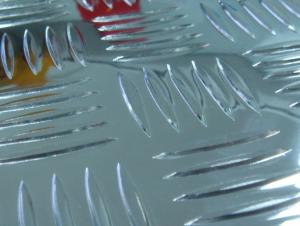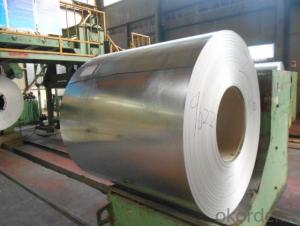301 cold rolled stainless steel sheet
- Loading Port:
- Shanghai
- Payment Terms:
- TT OR LC
- Min Order Qty:
- -
- Supply Capability:
- 2000 m.t./month
OKorder Service Pledge
Quality Product, Order Online Tracking, Timely Delivery
OKorder Financial Service
Credit Rating, Credit Services, Credit Purchasing
You Might Also Like
grade | 301 |
surface | 2B |
thickness | 1MM, |
width | 1200MM,1220MM,1500MM,ETC. |
length | 2400MM,2440MM,3000MM,ETC. |
Payment terms | T/T, or L/C. |
Delivery time | Normally within 1 weeks after get your deposits. |
package | Standard export package, normally with wooden pallets |
MOQ | 5 tons/each size |
- Q:Can stainless steel sheets be used for railway infrastructure?
- Yes, stainless steel sheets can be used for railway infrastructure. Stainless steel is known for its durability, corrosion resistance, and strength, making it suitable for various applications in the railway industry. It can be used for railway tracks, bridges, platforms, and other structures that require high strength and long-lasting performance. Additionally, stainless steel's low maintenance requirements and ability to withstand harsh environmental conditions make it an ideal choice for railway infrastructure.
- Q:Are stainless steel sheets resistant to saltwater corrosion?
- Stainless steel sheets possess a high level of resistance against corrosion caused by saltwater. The exceptional corrosion resistance of stainless steel is widely recognized, rendering it an ideal material for use in environments exposed to saltwater. The presence of chromium in stainless steel results in the formation of a protective oxide layer on the surface, effectively acting as a barrier against corrosion. This oxide layer serves to shield the steel from direct contact with saltwater, thus minimizing the risk of corrosion. Moreover, stainless steel grades such as 316 and 316L are specifically engineered to provide enhanced resistance against saltwater corrosion, further increasing their suitability for marine applications. In conclusion, the outstanding corrosion resistance properties of stainless steel sheets make them a dependable option for saltwater environments.
- Q:Is stainless steel plate permitted to contact galvanized material?
- The reason why stainless steel can not be welded or contacted directly with ordinary steel is to prevent corrosion of stainless steel, not to prevent corrosion of ordinary steel.
- Q:What is the weight of stainless steel sheets?
- The weight of stainless steel sheets can vary depending on their thickness and dimensions. Generally, stainless steel sheets have a density of 8 grams per cubic centimeter. To calculate the weight of a stainless steel sheet, you would need to know the dimensions (length, width, and thickness) and multiply them together to find the volume. Then, you can multiply the volume by the density to find the weight.
- Q:1cm thick 201 stainless steel plate how much money party
- Water or other weak corrosive medium or stainless steel is called stainless steel; and chemical resistance medium (acid, alkali, salt and other chemical etching) corrosion of steel is called acid resistant steel. Because of the difference in the chemical composition of the two, and make their corrosion resistance is different, ordinary stainless steel is generally not resistant to chemical medium corrosion, and acid resistant steel are generally stainless steel.
- Q:What are the different types of edge finishes available for stainless steel sheets?
- There are several types of edge finishes available for stainless steel sheets, including the straight edge, beveled edge, rounded edge, and hemmed edge.
- Q:Can stainless steel sheets be used in food processing or medical applications?
- Yes, stainless steel sheets can be used in food processing and medical applications. Stainless steel is a popular choice for such industries due to its excellent corrosion resistance, durability, and easy cleaning properties. It is resistant to chemical reactions, making it safe for contact with food and medical equipment. Stainless steel sheets are commonly used in food processing equipment, storage tanks, countertops, and surgical instruments. They meet the stringent hygiene standards required in the food and medical industries, making them a reliable and suitable material for such applications.
- Q:What kind of welding rod is used for 310S stainless steel?
- What kind of welding rod is used for 310S stainless steel?:310S stainless steel should be welded with ER-310 wire or A132 and 137 electrodes.
- Q:Are stainless steel sheets suitable for nuclear power plants?
- Yes, stainless steel sheets are suitable for nuclear power plants. Stainless steel is a highly durable material that possesses excellent corrosion resistance, mechanical strength, and heat resistance properties, which are crucial requirements for the harsh and demanding environment of nuclear power plants. Additionally, stainless steel's ability to withstand high temperatures and maintain its structural integrity makes it a reliable choice for various components, such as piping, vessels, and heat exchangers, within nuclear power plants.
- Q:What is the difference between stainless steel sheets and plates?
- Stainless steel sheets and plates, widely utilized across various industries and applications, possess distinct dissimilarities. Firstly, concerning thickness, sheets are generally thinner compared to plates. Sheets typically range from 0.4mm to 4mm, whereas plates commence at 4mm and extend to several inches. Secondly, their sizes differ. Sheets are commonly available in standard dimensions of 4ft x 8ft or 5ft x 10ft, while plates usually come in larger sizes and can be tailored to specific measurements. Plates are commonly employed in heavy-duty applications, necessitating enhanced strength and durability. Thirdly, weight plays a role in distinguishing the two. Due to the variance in thickness, plates generally possess greater weight than sheets. This characteristic renders plates more suitable for weight-bearing applications, such as construction, shipbuilding, or industrial equipment. Fourthly, the applications of sheets and plates differ. Stainless steel sheets are often employed for decorative purposes, architectural applications, and smaller-scale projects like kitchen backsplashes or countertops. Conversely, plates are favored for structural components, machinery parts, and load-bearing applications, like bridges, tanks, or pressure vessels. Lastly, cost distinguishes sheets from plates. Stainless steel plates are typically more expensive than sheets due to their larger size and increased thickness. Sheets, being thinner and smaller, are usually more cost-effective and readily accessible. In summary, the key distinctions between stainless steel sheets and plates encompass their thickness, size, weight, applications, and cost. It is imperative to consider these factors when selecting the appropriate material for a specific project or application.
1. Manufacturer Overview |
|
|---|---|
| Location | |
| Year Established | |
| Annual Output Value | |
| Main Markets | |
| Company Certifications | |
2. Manufacturer Certificates |
|
|---|---|
| a) Certification Name | |
| Range | |
| Reference | |
| Validity Period | |
3. Manufacturer Capability |
|
|---|---|
| a)Trade Capacity | |
| Nearest Port | |
| Export Percentage | |
| No.of Employees in Trade Department | |
| Language Spoken: | |
| b)Factory Information | |
| Factory Size: | |
| No. of Production Lines | |
| Contract Manufacturing | |
| Product Price Range | |
Send your message to us
301 cold rolled stainless steel sheet
- Loading Port:
- Shanghai
- Payment Terms:
- TT OR LC
- Min Order Qty:
- -
- Supply Capability:
- 2000 m.t./month
OKorder Service Pledge
Quality Product, Order Online Tracking, Timely Delivery
OKorder Financial Service
Credit Rating, Credit Services, Credit Purchasing
Similar products
New products
Hot products
Related keywords





























